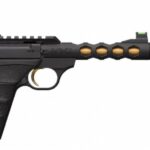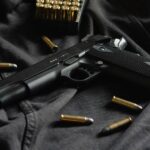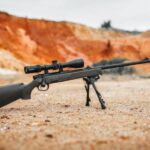Table of Contents
Many upland hunters have grown up knowing the Browning brand pretty well. Most have owned its products.
Grandfathers and fathers have taught the young to trust this brand for their perfect bird gun.
The brand changed its name and relocated the factory during the close of the 20th century. But their guns, Citori, remain the same.

A modern Citori carries every feature of the original Superposed that John Browning designed – save for a few improvements.
These guns attracted many hunters to stack barrel shotguns.
Superposed/Citori was the ideal design of what an over/under should be.
Many suspected that the company would stray from this original recipe. But it didn’t.
In 2004, Browning introduced something new – the Cynergy.
An all-new over/under firearm appeared different from the Citori line, which was the brand’s mark.
The most significant difference was Cynergy’s avant-garde racy appearance.
And now we have these two beautiful shotguns to choose from. Which one is the best?
Today, we shall be looking at Browning Cynergy vs. Citori. This comparison should help you make a more informed decision.
Browning Cynergy Vs. Citori
The Citori is an old-school choice, but it comes with options like the 725, which have inertial triggers and other cool features.
Cynergy, on the other hand, comes with more modern features. Its unique hinges and mechanical triggers attract more users than any other gun from the brand.
That is not the only area of comparison. Here, we will be offering a complete comparison based on specific features.
The Difference
The Citori family created the foundation upon which Browning built its O/U empire.
It, therefore, came as a surprise to many when the Cynergy came out decidedly different. There are several aspects of the guns that set them uniquely apart.
Construction (The Monolock Hinge)
The avant-garde and racy styling that you will notice it’s pretty apparent first on the Cynergy compared with the Citori.
The first Cynergy came out strong with a futuristic recoil pad. It curved nicely to a cut-out inside the stock.
Also, it was considered to reduce recoil by up to 20%.
That’s not all; the most significant change was the new low-profile action that defined this gun.
There is nothing wrong with the Citori’s receiver, only that it cuts pretty deep. It is because its hinges attach at the lowest end of the action.
That makes them heavier and longer on the receiver. Hence, the clever minds at Browning decided to add on this a more advanced Monolock hinge.
The feature comes with dual lumps, fitting into channels inside the Monolock. This action eliminated the need for a hinge.
It also reduced the gun’s general profile, bringing it to compete with other mainstream manufacturers like Beretta.
The gun was lighter and with an improved over/under design.
Triggering
The Monolock looks like the most significant difference between the Cynergy and Citori. But it might not be.
On the Citori, you will find an inertia trigger. This feature utilizes the recoil from firing the first barrel to bring back the firing mechanism for another barrel.
It is to prevent the shooter from accidentally making a double under recoil.
Contrastingly, Cynergy introduced the Reverse Striker ignitions system.
This mechanism features a mechanical trigger that allows the shooter to fire twice in rapid succession without doubling issues.
This game shooter generally promises better performance, making the gun faster.
Shooting
It’s not only in the looks and the triggering that we find significant differences between the Cynergy and the Citori. There is also something in how they shot.
The Cynergy shot very differently. It was harder for some shooters to adjust at first.
But later, they came to appreciate the low-profile, smooth shooting of this gun.
Year after year, Cynergy faced significant evolutions. The initial Cynergy Feather versions bore the classic fashion-forward recoil pad.
It made a deep cut through the stock.

On the 2020 Cynergy Feather, you will find an inflex pad like the Citori and Citori 725. Note, however, that Browning introduced this as a limited availability gun.
You may see the same Grade I/II walnut stock on the Cynergy Feather as other O/U shotguns. But these have apparent differences:
- The Cynergy’s forearm is broader and flatter compared to the Citori’s. Also, it comes bearing a subtle Schnabel fore-end.
- A more traditional design on the stock may seem less than what’s on the original Cynergy Feather. But it works just perfectly, with great comfort.
- Another significant aspect is how Cynergy’s walnut stock contrasts excellently with its aluminum alloy receiver. Then the silver nitride finishes and engraves game actions bring the gun’s looks to life.
- There is steel on the breech face and hinge surfaces. It makes the gun more durable.
- The Cynergy Feather comes only in 12 gauge with 26 or 28 inches barrel lengths.
Better features have been added to make the Cynergy Feather more unique and functional. The barrels have ventilations at the top and midrib and a bluish finish.
It also carries a 5/16 rib with one white bead.
Weight
Due to the reduced receiver profile and aluminum alloy materials, the Cynergy Feather is relatively light.
There may be no better option for someone who needs a lightweight field gun.
A good example has 28-inch barrels weighing around six ¾ inches.
This weight may differ from gun to gun depending on the wood weight, but it does not go very far. Some, like the 26-version, weigh a little less.
Don’t let the reduced weight fool you, though. The Cynergy is not any whippy.
It brings out balance right from the receiver’s front.
Combining this with the product’s small weight, incredible stock appearance, and low-profile boxlock action makes this the Cynergy and incredibly natural-pointing shotgun.
It’s an excellent choice if you are seeking to capture birds hurriedly.
Browning Cynergy Vs. Citori – Range
Looks may not matter a lot to every shooter. But it’s hard meeting anyone who does find pleasure in the feel and handling of the Cynergy.
The gun comes with a narrow receiver that lowers the gun, assuring easy pointing.
The Citori is a 50/50 POI gun, while the Cynergy is a 60/40. Test it with hard crossers, outgoing and angle shots, and find the Cynergy accurate at 40 yards.
The 10 POI difference between the guns may not seem much, but it carries a considerable significance.
In terms of handling recoil, the Cynergy carries the day too. And it’s all thanks to its stock design, recoil pad, and beautiful balance.
You can still manage it easily, even when using magnum upland loads.
Considering its matte finish and a 3-inch chamber, the Cynergy could be interesting for a duck gun.
It also features light target loads, making it a very soft-shooting shotgun. It’s suitable for all users.
Conclusion
There is genuinely no winner in the Browning Cynergy vs. Citori comparison.
On the one hand, we have the Cynergy CX models that feature a 60/40 POI and a light touch.
It fits the demands of most shooters both on the range and in the fields. Its Monolock hinge brought a great revolution to the company.
On the other hand, we have seen tremendous advancement in the more old-school Citori. The over/under line carries the classic Citori and the latest 725 versions.
The newer guns come with a low-profile receiver, mechanical triggers, and Invector DS, making them quite competitive in the modern market.
It’s a revolutionary gun that defiles the original Citori design.
The choice remains yours. The Cynergy may be newer, with better features, and probably the most obvious choice, but the Citori is equally effective.








